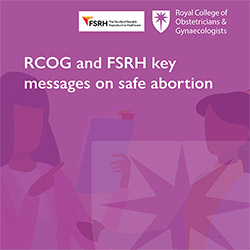There are a range of steps that all governments and national health services can and should take to expand safe abortion access in their countries.
As a form of healthcare, abortion should never be subject to criminal sanctions and should not be regulated by criminal law.
Making abortion illegal does not stop pregnant people from seeking abortions, but it does result in them obtaining abortions that are potentially unsafe, putting them at risk of complications, disability and death.
To save lives, abortion should not be subject to criminal sanctions for patients, healthcare professionals and others who are assisting in accessing abortion care.
It should be subject to regulatory and professional standards, in line with other medical procedures, placing sexual and reproductive health, rights and autonomy at the heart of abortion regulations.
There should be no legal time limit for abortions that are performed to safeguard the health and safety of pregnant people, women and girls.
Abortions are common but often highly stigmatised.
In many countries and contexts, abortion is stigmatised, surrounded by negative and often harmful attitudes.
Stigma is experienced by both those who seek abortions and abortion care providers and creates a significant barrier to safe abortion access.
Stigma can be reduced and minimised.
Firstly, it is essential to place people who require an abortion at the heart of abortion policies, emphasizing it is their health and their choice.
Abortion services should be integrated as part of reproductive health services, while ensuring women and pregnant people opting for abortion are treated with respect and dignity.
Removing medically unnecessary barriers to abortion, such as court orders, parental permission, doctor approvals and mandatory waiting periods, will help to debunk abortion myths that contribute to stigma.
Stigma experienced by abortion care providers needs to be recognised and addressed, including by acting against bullying and harassment, and offering counselling and other support to prevent burnout for staff.
Decriminalising abortion is also key to reducing stigma experienced by both providers and those seeking abortions.
Barriers to safe abortion are exacerbated for vulnerable and marginalised populations.
Pregnant people in vulnerable situations or from marginalised groups, including trans men and non-binary people, tend to be disproportionately negatively affected by the barriers to safe abortion.
Those with low income or living in poverty, adolescents, women with disabilities, survivors of sexual and domestic violence, and women from ethnic minorities, refugees and other displaced persons may be particularly vulnerable to inequitable access to safe abortion services.
Service provision must be designed to ensure that it reaches the most marginalised populations and addresses their particular health needs in a dignified and respectful way.
The introduction of telemedicine for early medical abortion provides a safe and effective pathway, facilitating a patient-centred approach to care.
Telemedicine allows those needing an abortion to do so in their own home without needing to physically see a healthcare professional or visit an abortion clinic.
A tele-consultation can determine eligibility according to best practice guidance.
Evidence shows that telemedicine can help to provide an efficient system, ensuring women access to abortion care early in their pregnancy.
Where eligible, people should always be given the option to choose this service.
WHO guidelines show that self-management of abortion during the first trimester using mifepristone and misoprostol in combination, or when mifepristone is not available using misoprostol only, is safe.
WHO Guidelines on self-management of abortionstipulate that it is safe and critical in expanding safe abortion care.
It reduces transport costs, increases privacy and the ability to manage stigma and enables abortions to be performed sooner.
For a self-management regime to be successful, the following need to be in place:
- Information provision for people about self-managing abortion must be clear and comprehensive and counselling should be offered on request.
- Healthcare providers and health systems more broadly must be supportive, equipped and willing to care for individuals self-managing their abortion if needed or requested.
- Quality assured medication must be available in the right dosage and with sufficient stocks.
- And finally, the legislative and policy framework in a country need to be adjusted to allow for self-managed abortion.
Governments have a responsibility to ensure adequate provision of medicine, supplies and equipment, must put in place infrastructure and ensure adequate financing to allow for safe abortion and post-abortion provisions.
Additionally, governments should put in place measures to stop intimidation and harassment of those using or working at abortion services, including introducing buffer zones and other measures where necessary, and the enforcement thereof.
To expand abortion access, Governments must ensure that abortion care is a mandatory part of medical training for doctors, midwifes and nurses.

